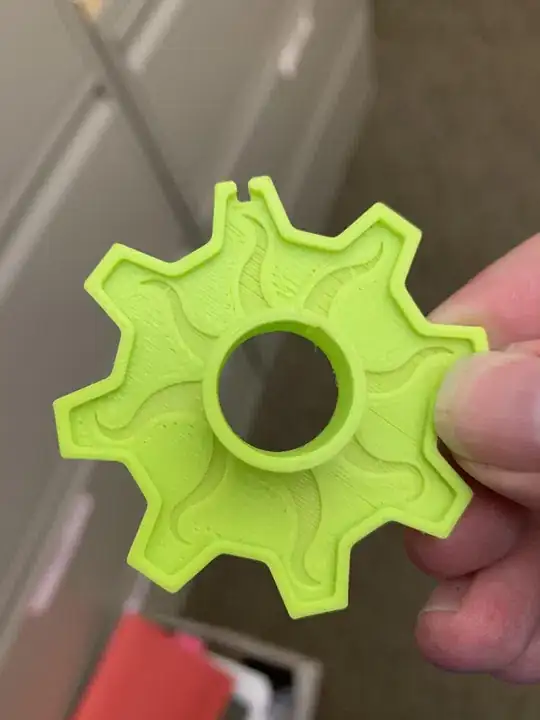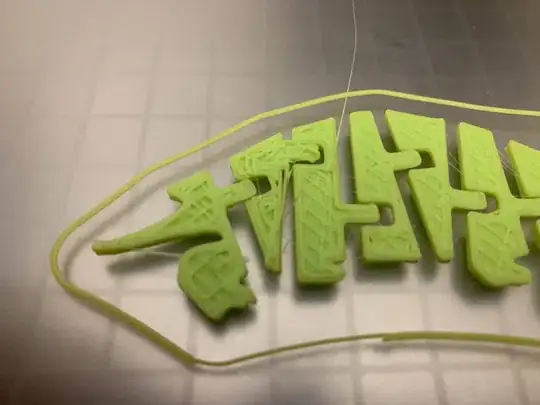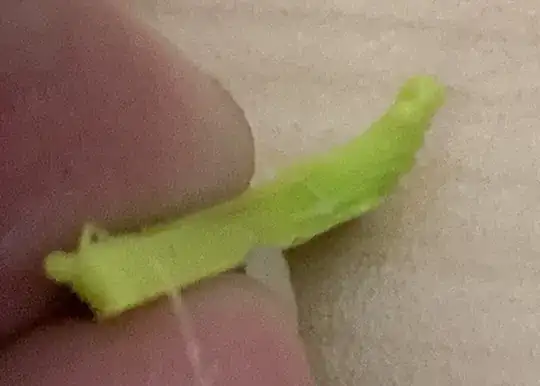I've been working on calibrating my Taz Workhorse, and was dealing with some under-extrusion issues, despite checking the e-steps on the extruder and relatively modest retraction settings (2.5 mm at 25 mm/second).
Lulzbot tech support suggested I boost my flow to 105 % to account for this, and the little Lulzbot gear that resulted was decent (note this picture is after some minor string removal).
I tried moving on to a articulated Turtle, and there's a consistent failure at 17 %, where you can hear the nozzle collide with a part and knock it off the print bed, followed by the usual mayhem.
From looking at the parts, it looks like all the small joints in the piece have a lot of excess material in them, causing an upward arc, and eventually getting high enough that they're well over the height of the next layer. That's where the collision occurs, presumably.
What's the likely cause of this? The increased flow? Some other issue?
Other settings are mostly the Ultimaker Cura defaults, but I've also turned combing and Z-hop on (combing, especially, to combat stringing).
Print Settings:
- Lulzbot Taz Workhorse using Cura
- Polylite PLA 2.85 mm
- Print temperature: 215 °C (roughly the middle of the range, and where previous calibrations put me)
- Bed temperature: 60 °C
- Retraction: 2.5 mm at 25 mm/sec
- Combing "on"
- Z-Hop When Retracted "on" @ 1 mm
- Fan Speed: I've tried 60 % (default) and 100 %
- Print Speed: 40 mm/s
- Flow: 105 %



